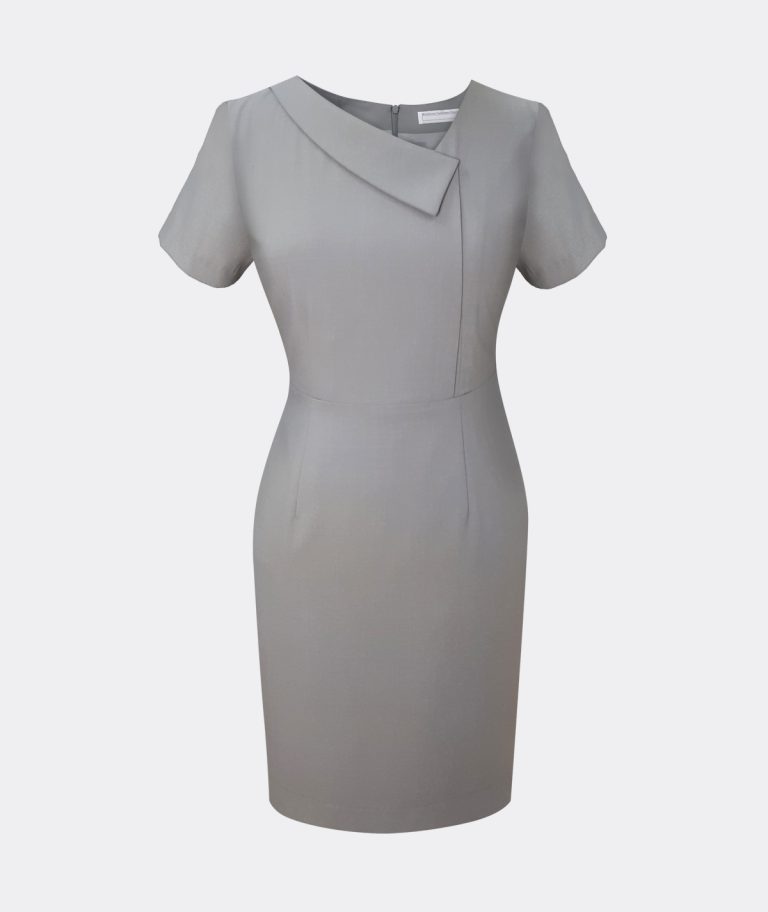Uniform dress styles have become an essential part of modern professional and institutional settings. Whether you're in healthcare, education, hospitality, or corporate environments, uniforms play a critical role in projecting professionalism and unity. In this article, we will delve deep into the fascinating world of uniform dress styles, exploring their history, evolution, and importance in various sectors.
Uniforms are more than just clothing; they represent identity, discipline, and professionalism. From nurses to chefs, teachers to corporate executives, each industry has its own unique style that reflects its values and mission. As we explore this topic further, you'll discover how uniform dress styles have evolved over time and why they continue to be relevant today.
This guide is designed to provide valuable insights into the world of uniform dress styles, offering practical tips, expert advice, and actionable information. Whether you're looking to design a uniform for your business or simply want to understand the significance of uniforms in different industries, this article will serve as your ultimate resource.
Read also:Il Makiage Wrinkle Filler Reviews Before And After A Comprehensive Guide
Table of Contents
- The History of Uniform Dress Styles
- Why Uniform Dress Styles Matter
- Uniforms Across Different Industries
- Key Elements in Designing Uniforms
- Current Trends in Uniform Dress Styles
- Benefits of Wearing Uniforms
- Customizing Uniforms for Your Business
- Maintaining Uniforms for Longevity
- The Future of Uniform Dress Styles
- Conclusion and Final Thoughts
The History of Uniform Dress Styles
Uniform dress styles have a rich and fascinating history that dates back centuries. Originally used to identify soldiers and members of royal households, uniforms have evolved significantly over time. In ancient civilizations, distinct clothing was used to signify rank, profession, or social status. This practice laid the foundation for modern uniform dress styles.
Evolution of Uniforms
From military regalia to medieval guilds, the concept of uniforms has undergone remarkable transformations. During the Renaissance, uniforms became more standardized, particularly in military and religious organizations. By the 18th and 19th centuries, industries such as transportation, healthcare, and education began adopting uniforms to enhance professionalism and efficiency.
Modern Uniforms
In the 20th century, uniform dress styles expanded into various sectors, including aviation, retail, and hospitality. The focus shifted from mere identification to functionality, comfort, and branding. Today, uniforms are designed to align with corporate identity while ensuring practicality for employees.
Why Uniform Dress Styles Matter
Uniform dress styles are more than just a set of clothes; they serve multiple purposes in professional and institutional environments. Let's explore why uniforms are crucial in today's world:
- Professionalism: Uniforms create a sense of unity and professionalism, helping employees project a consistent image.
- Brand Identity: Well-designed uniforms enhance brand recognition and reinforce a company's values and mission.
- Efficiency: Uniforms eliminate the need for employees to worry about what to wear, allowing them to focus on their tasks.
- Safety: In industries like healthcare and construction, uniforms are designed to ensure safety and compliance with regulations.
Uniforms Across Different Industries
Each industry has its own unique requirements when it comes to uniform dress styles. Let's take a closer look at how uniforms are tailored to meet the needs of various sectors:
Healthcare
In healthcare, uniforms are designed for functionality and hygiene. Scrubs, lab coats, and nursing uniforms are crafted to ensure ease of movement and compliance with health regulations. According to a study published in the Journal of Healthcare Quality, proper uniforms can significantly reduce the risk of contamination in medical settings.
Read also:Kim Kardashian Pregnant The Latest Updates Facts And Everything You Need To Know
Education
School uniforms have long been a topic of debate, but their benefits are well-documented. Research by the U.S. Department of Education shows that uniforms can improve discipline, reduce bullying, and foster a sense of equality among students.
Hospitality
In the hospitality industry, uniforms are designed to reflect the brand's image while ensuring comfort for employees. Hotels, restaurants, and airlines invest heavily in creating uniforms that align with their brand identity and enhance customer experience.
Key Elements in Designing Uniforms
Designing effective uniform dress styles involves several key considerations. Here are some essential elements to keep in mind:
- Material: Choose durable, breathable fabrics that can withstand frequent washing and heavy use.
- Fit: Ensure uniforms are tailored to fit employees of all sizes and body types comfortably.
- Color: Use colors that align with your brand identity and are visually appealing.
- Functionality: Incorporate features like pockets, zippers, and adjustable straps to enhance usability.
Current Trends in Uniform Dress Styles
The world of uniform dress styles is constantly evolving, with new trends emerging every year. Here are some of the latest trends to watch out for:
Sustainability
With growing concerns about the environment, many companies are opting for eco-friendly uniforms made from sustainable materials. Brands like Patagonia and Adidas are leading the charge in this area, using recycled fabrics and ethical manufacturing practices.
Technology Integration
Smart uniforms equipped with technology are becoming increasingly popular. These uniforms can monitor vital signs, track employee movements, and enhance safety in hazardous environments.
Benefits of Wearing Uniforms
Wearing uniforms offers numerous benefits for both employers and employees. Here are some of the most significant advantages:
- Cost-Effective: Uniforms reduce the need for employees to purchase expensive work attire, saving them money in the long run.
- Improved Morale: When employees feel part of a team, it boosts their morale and job satisfaction.
- Enhanced Customer Experience: Uniforms make it easier for customers to identify staff, leading to better service and interactions.
Customizing Uniforms for Your Business
Customizing uniforms to fit your business's unique needs is essential for creating a cohesive brand image. Consider the following tips when designing uniforms for your organization:
Brand Alignment
Ensure your uniforms reflect your brand's colors, logo, and values. This creates a strong visual connection between your employees and your company.
Employee Feedback
Involve your employees in the design process to ensure the uniforms meet their needs and preferences. This fosters a sense of ownership and increases satisfaction.
Maintaining Uniforms for Longevity
Proper maintenance is crucial for extending the lifespan of uniforms. Here are some tips for keeping uniforms in top condition:
- Regular Cleaning: Establish a routine for washing and ironing uniforms to prevent wear and tear.
- Storage: Store uniforms in a cool, dry place to avoid damage from moisture and pests.
- Repairs: Address any tears or stains promptly to prevent further damage.
The Future of Uniform Dress Styles
As technology continues to advance, the future of uniform dress styles looks promising. Innovations in fabric technology, smart clothing, and sustainable practices will shape the next generation of uniforms. Companies that embrace these changes will be better positioned to meet the evolving needs of their employees and customers.
Conclusion and Final Thoughts
In conclusion, uniform dress styles play a vital role in professional and institutional settings. From their historical roots to their modern applications, uniforms have evolved to meet the needs of diverse industries and workforces. By understanding the importance of uniforms and incorporating the latest trends into your business, you can enhance professionalism, improve efficiency, and strengthen your brand identity.
We invite you to share your thoughts and experiences with uniform dress styles in the comments section below. Have you noticed any interesting trends in your industry? Do you have tips for designing effective uniforms? Let us know! And don't forget to explore our other articles for more insights into the world of professional attire.



